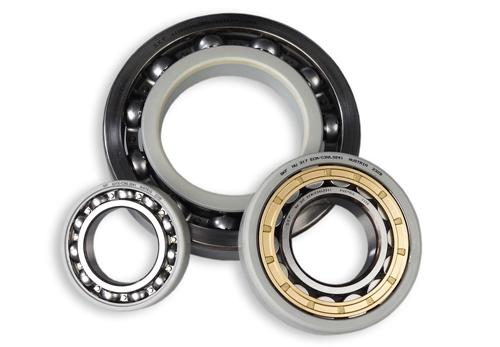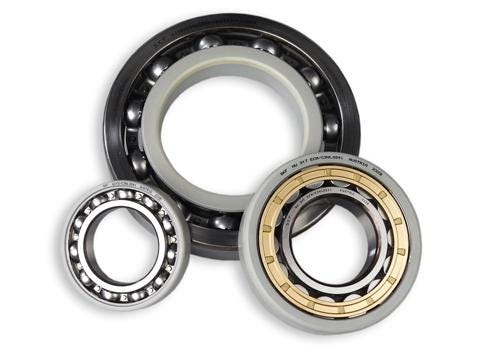Choosing the Right Bearing
December 13, 2011

Bearings in rotating machinery universally serve to support shaft loads and provide shaft location and system rigidity while reducing friction. Whether a bearing will be suitable for an application will hinge in part on a bearing's particular design and associated capabilities. When specifying bearings, designers must consider and evaluate myriad application-related factors to find the best match.
Every application will naturally present its own set of challenges, but there are general rules of thumb. Designers choosing a standard bearing type should take a close look at the available design envelope; loads (magnitude and direction); potential misalignment; needs for precision, relubrication, replacement, speed, and stiffness; and preload. The bearing arrangement, too, will be critical and will be influenced by application parameters. An application may uniquely require the introduction of nonstandard materials and/or coatings for inherent properties that will enhance reliability in service.

Following are some general guidelines to help point the way for designers toward the most appropriate bearing solutions.
Application-related factors
Design envelope. In many cases, one of the principal dimensions of a bearing -- the bore diameter -- is predetermined by a machine's power design and the required shaft diameter. For small-diameter shafts, all types of ball bearings can be used (as well as needle roller bearings), while roller bearing types usually will be specified for applications featuring large-diameter shafts. (Examples include cylindrical, tapered, spherical, and toroidal roller bearings.) Deep groove ball bearings also may be a viable option for large-diameter shaft applications, depending on loading.
When radial space is limited, bearings with a small cross section -- especially those with a low cross-sectional height, such as needle roller bearings -- can make a good fit. When axial space is limited, designers will want to specify bearings that can handle radial, axial, or combined loads.
Loads. Bearings must always be subjected to a given minimum load to provide for proper rolling element rotation and enhanced lubricant film formation in rolling contact areas. (Otherwise, the phenomenon known as "skidding" can occur, resulting in higher operating temperatures, lubrication degradation, and potential premature failure.)
The magnitude of the load is one of the factors that usually will determine the type and size of the bearing for an application. Generally, roller bearings can support heavier loads than similarly sized ball bearings, and bearings incorporating a full complement of rolling elements can accommodate heavier loads than corresponding caged bearings. Ball bearings are mostly used where loads will be relatively light or moderate. For heavy loads and where shaft diameters are large, roller bearings typically are recommended.
Beyond magnitude, the direction of the load can help guide selection of bearing type and size. Some bearings can only support pure radial loads (e.g., needle roller and toroidal roller bearings), while all other radial bearings can accommodate some axial loads in addition to radial loads. Other types (thrust ball bearings and four-point contact ball bearings) have been engineered to handle purely axial light or moderate loads.
A bearing's ability to carry an axial load will be determined by the angle of contact or load action internal to the bearing (the greater the angle, the more suitable the bearing for axial loads). Angular contact ball bearings can support moderate axial loads at relatively high speeds. For moderate and heavy axial loads acting in one direction, spherical roller thrust bearings or tapered roller bearings often will be specified.
About the Author(s)
You May Also Like


.jpg?width=300&auto=webp&quality=80&disable=upscale)


